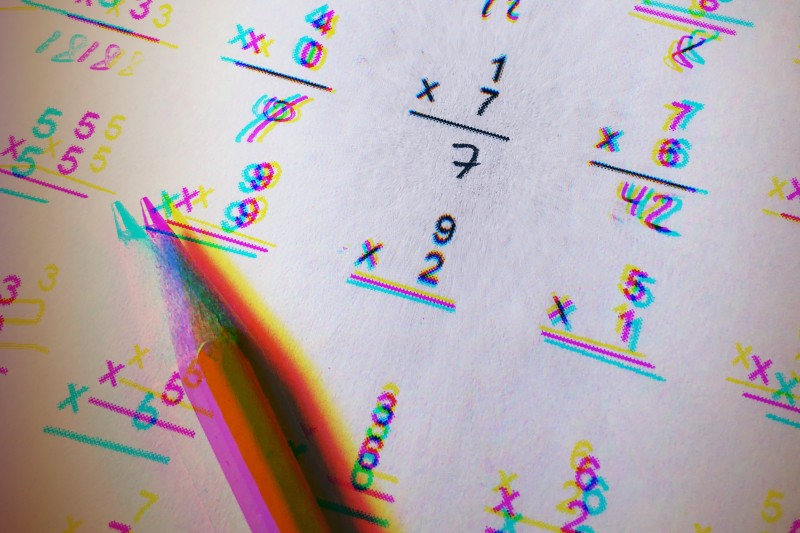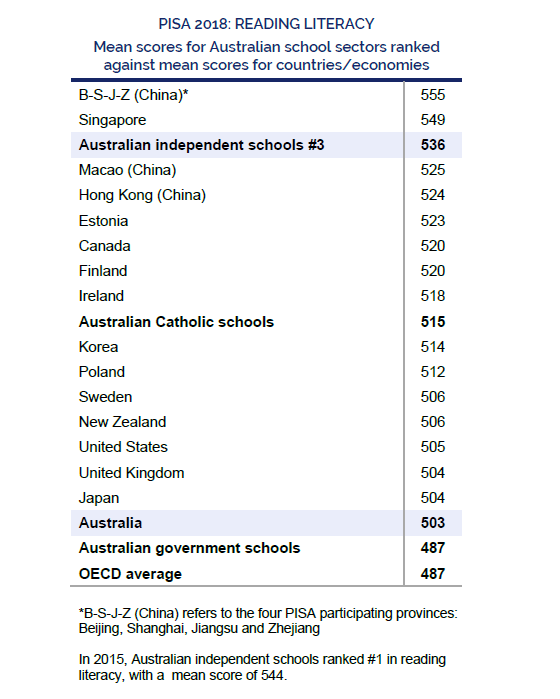
What do Australia's PISA Results Mean for Us?
PISA is the Programme for International Student Assessment formed by the OECD in 1997. PISA measures 15-year-olds’ ability to use their reading, mathematics and science knowledge and skills to meet real-life challenges.
We don’t need to be alarmed by the PISA test results, but we do need to take notice. In this post I want to encourage everyone to work together so we can all make a difference in our children’s learning.
Should Australian parents be alarmed?
Many of you will have read the recent news articles about the drop in Australian students’ reading, mathematical and scientific results on the international PISA tests. Since 2003, Australia’s results have declined further than most countries in the world. Education Minister Dan Tehan is quoted as saying “these results should have alarm bells ringing.” (Sydney Morning Herald, December 2019)
Australia’s ranking has slipped on the international stage to just above the OECD average. Unfortunately, there has been a decline in Australian mean scores in each school sector over the last 15 years.
Should NAC parents be alarmed?

Whilst much doom and gloom has been reported in the media, there is encouraging news for NAC. PISA is held every three years to test how well students in their final years of school apply their knowledge to real-life challenges, that is, students’ higher order thinking skills are evaluated, not just their basic literacy and numeracy skills. Nationally, 773 randomly selected schools and approximately 14 000 Australian students took part in PISA 2018. Thirty Nowra Anglican College students from Years 9 to 11 were selected to participate in the tests. Despite the slip in the ratings for Australia in general, when the data is broken down to evaluate how each schooling sector is performing, the results are quite encouraging for independent schools.
Australian independent schools rank highly against top-performing countries placing third in reading literacy, fourth in scientific literacy and eighth in mathematical literacy. (PISA 2018 and Australia’s independent schools’ member briefing 4 December 2019
How did NAC perform?
Ours students’ results are in keeping with the high results achieved by the Australian independent school sector. Performance is divided into High, Middle and Low performers. The percentage of our students in the High performer category for Reading literacy is well above all students with 25% of our students scoring in the High category as compared to like students (8%) and all students (13%). Similar results have occurred in Mathematical and Scientific literacy as compared to other students.
These results are encouraging signs that our students are developing soundly in the key areas of critical and analytical thinking and rank highly compared to students from across the world.
Why have the Australian results been slipping?
There are a number of explanations for the drop in Australia’s overall ranking. In 2015, Australian independent schools ranked first in reading literacy, second in scientific literacy and equal fifth in mathematical literacy.
The slide in ranking is partly explained by the dominance in 2018 by the wealthy provinces in China, which first participated in PISA in 2015. However, mean scores of Australian independent schools have dropped slightly in all domains.
We do need to look at what is happening for Australian students themselves and what conditions in their lifestyles are contributing to this slide.
Mr Daniel Toole, Year 7 Coordinator, wrote to me with his concerns about students and their use of technology.
“Today’s young adults have so many different areas that are competing for their attention and time,” he wrote.
“Mobile phone games have so many components designed to make the user spend as much time as possible on the game. The console game networks, Fortnite and Call of Duty have leader boards that can only be climbed with almost constant use. Have a look at the stats on these leader boards and you will see that the leaders (often young teenage boys) have spent thousands of hours playing these games – presumably late at night.
On top of that we have students who are addicted to social media, particularly on their mobile phones. They often sleep with the phones next to them with sleep interrupted by constant pinging and they can’t seem to help themselves but check the messages. It is little wonder that many students come to school very tired.”
Indeed, this observation is backed by research.
Cognitive scientist Jared Cooney Horvath highlighted the hours of computer use per week for over 1500 students in the United States and discovered these students spent:
- 10 hours 44 minutes playing video games
- 10 hours 2 minutes watching television or film clips (YouTube, Netflix, etc.)
- 8 hours 14 minutes scrolling social media
- 7 hours 32 minutes listening to music
- 3 hours 25 minutes doing homework (at home)
- 2 hours 5 minutes doing schoolwork (at school)
- 1 hour 14 minutes reading for pleasure (on CPU or eBook)
- 52.5 minutes creating digital content (art, music, posts, etc.)
- 14 minutes writing for pleasure
Students spend over 32.5 hours each week using computers to rapidly jump between various forms of media and entertainment. This is nearly six times more than the 5.5 hours per week they spend using computers for learning. Less than 9% of computer time is actually used for learning purposes. (Cooney Horvath, 2019).
How can we help improve our children’s learning?
As well as considering the issue of technology, our Building Learning Power learning framework has been implemented to ensure that every student in our College flourishes in all aspects of their development, in line with our mission.
Our Mission
- To provide a high quality Christian education within a welcoming community where all individuals are valued and belong.
- As a community of learners we strive for excellence, unlocking the potential of each individual, developing confident, active learners who improve their world.
Partnering with parents and our community is key to helping our students achieve their potential. When parents and families engage in their children’s learning, student achievement and wellbeing is positively impacted. (Barker and Harris, 2020, Parent and Family Engagement, Australian Research Alliance for Children and Youth)
Tips for Parents
We encourage you to show your child that you value learning. The following tips can help your child maintain a positive attitude to school.
- Show your child that you place a high value on education by talking to them about what you think about education and how important it is.
- Model learning to your child by reading in front of them
- Read a book with your child
- Ask your child, “what did you learn today?”
- Set up protocols and agree on a homework routine. Help your child set up a place for them to study and be willing to help them when they need it.
- Help your child find a good balance with technology. Talk to them about screen time, what the rules might be for this term and why they are important. Place restrictions on screen time. Make sure you yourself hold to these ideals.
- Have a technology free day once a week in the house – go for a family walk, play sport, ride a bike.
- Make sure you are on time for school
- Thank teachers for their hard work, in front of your children
- Let your children be responsible and let them know it is ok to make mistakes.
- Use the Building Learning Power language with your children to help them become resilient, reflective and resourceful learners.
Further Reading

Principal